Abstract
Previously, we described a system allowing the study of murine T cell-dependent proliferative responses to Trypanosoma brucei antigens. It was observed that T. brucei-specific T cells could be demonstrated in the regional lymph nodes of primed mice for only 2 to 3 weeks following priming. The results of the present study indicate that this inability to demonstrate a long-lived memory response is due to an immunosuppressive effect of the resulting T. brucei infection. The exact mechanism of the suppression is not known, and appears to function in the absence of demonstrable suppressor cells. Since the T cell responses are strictly dependent on the presence of macrophages, we have investigated whether the loss in responsiveness is due to a defect in the T cell population, or to a loss of macrophage function. Our results show that T cells taken from mice 3 weeks after priming with T. brucei are unable to mount a proliferative response in the presence of a normal macrophage population, and conversely that macrophages taken 3 weeks after infection with T. brucei are unable to elicit a normal proliferative response using a competent primed T cell population. Thus these results indicate that both populations are affected by the parasite infection.
Full text
PDF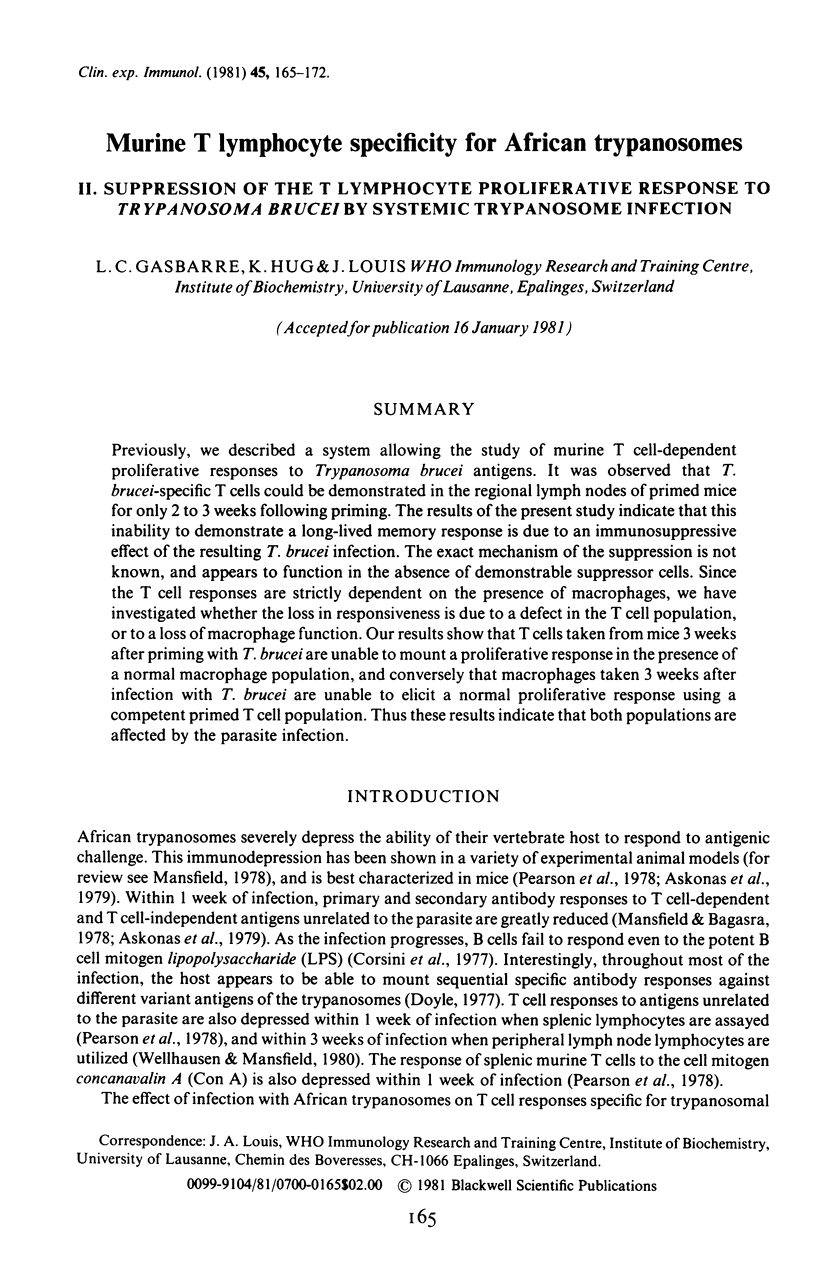
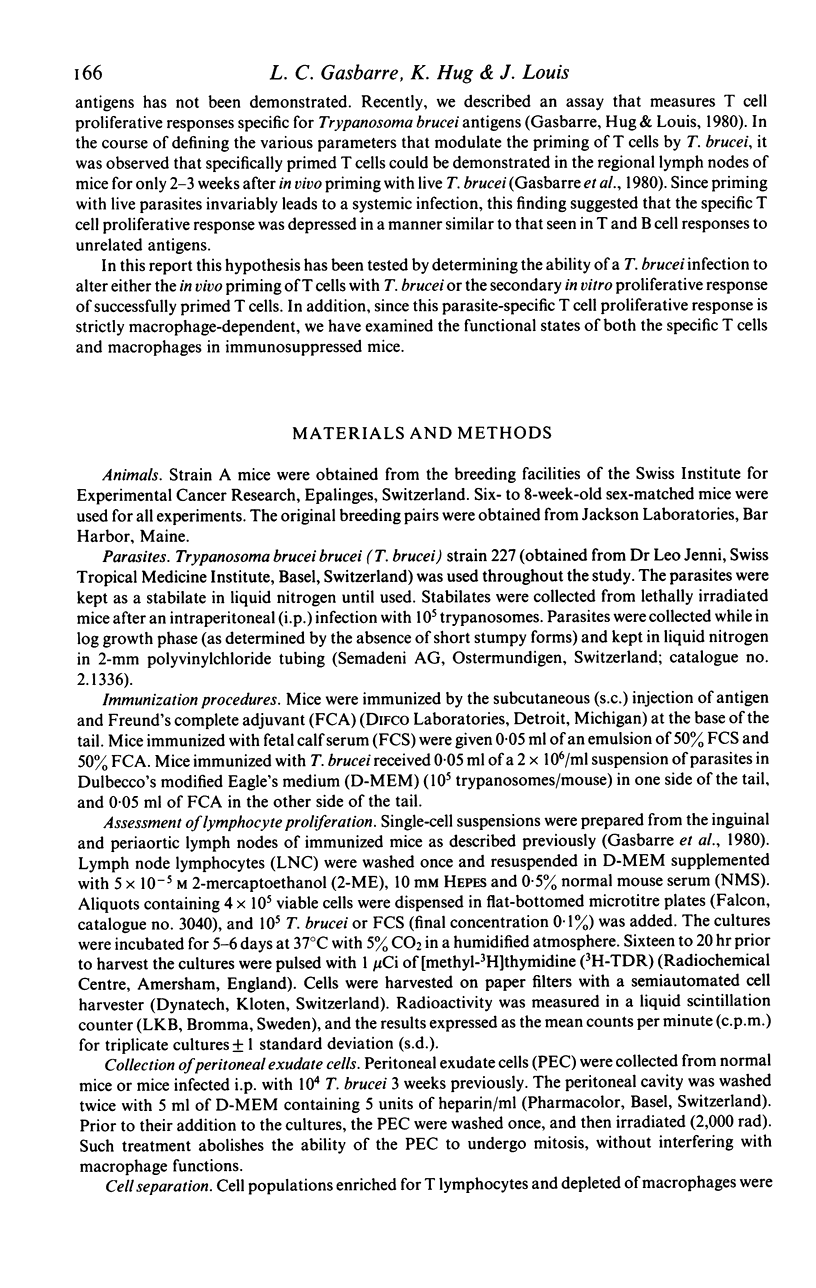
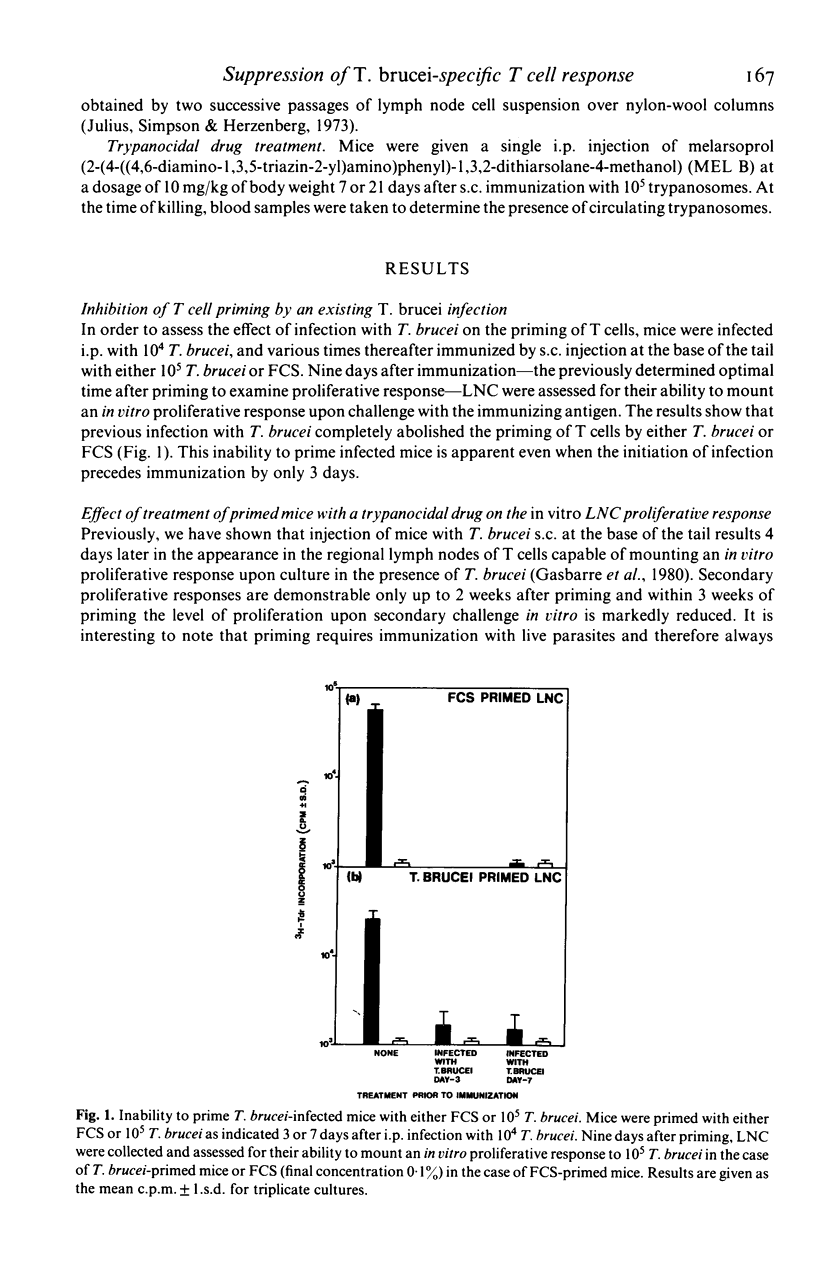
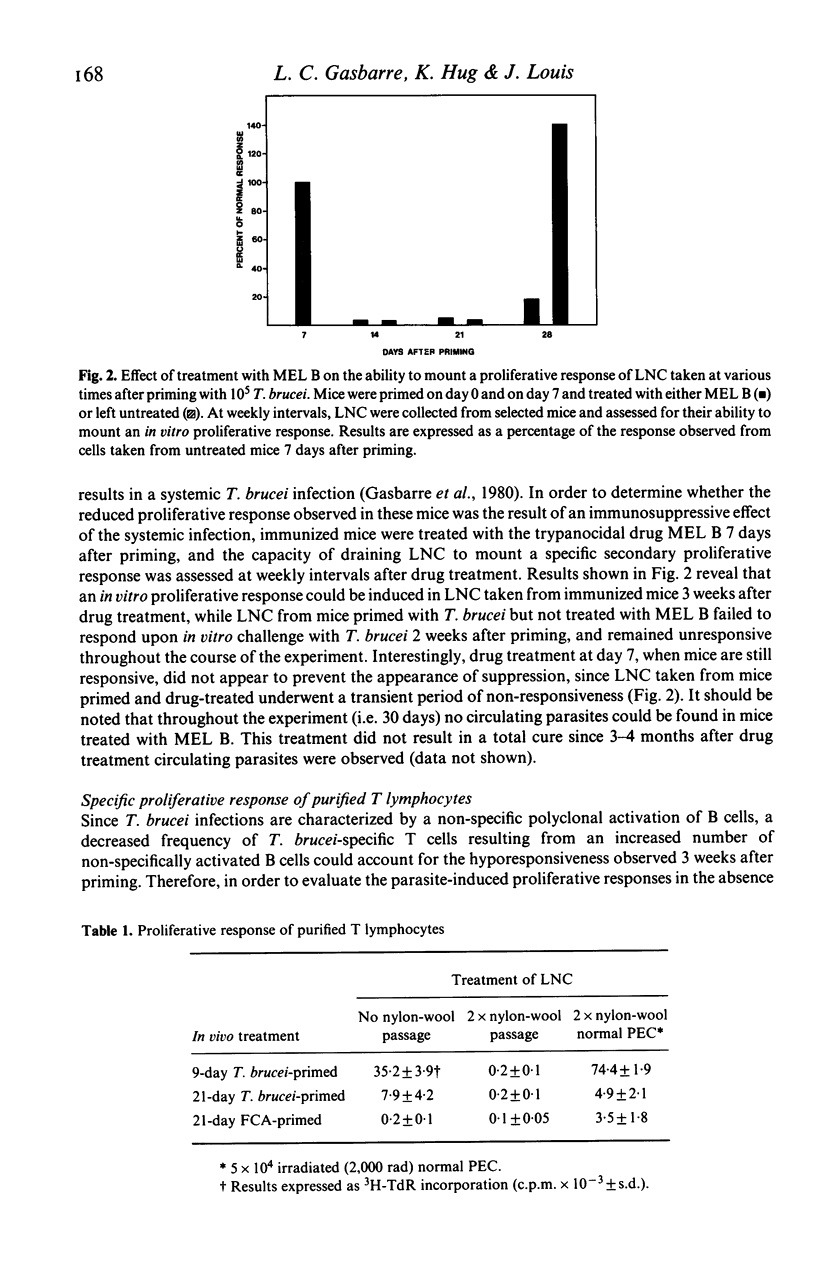
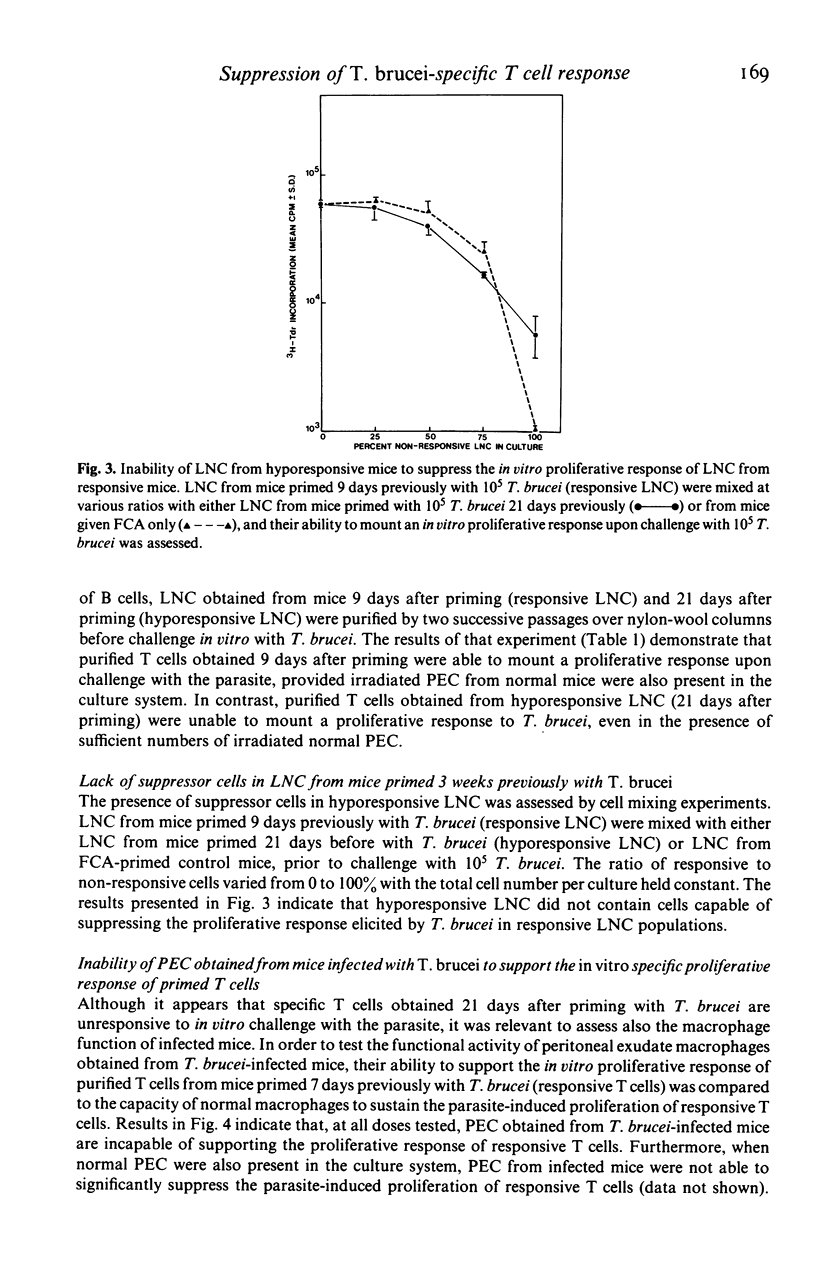
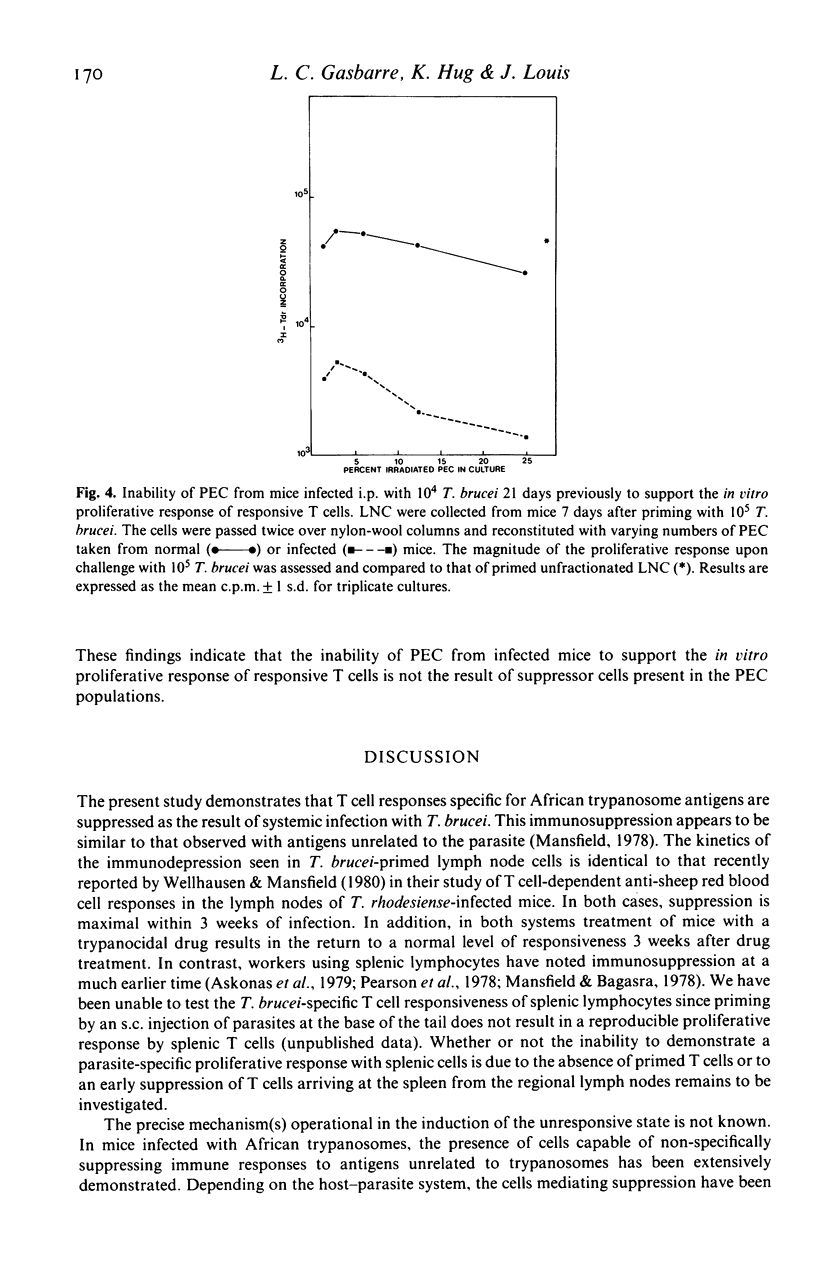
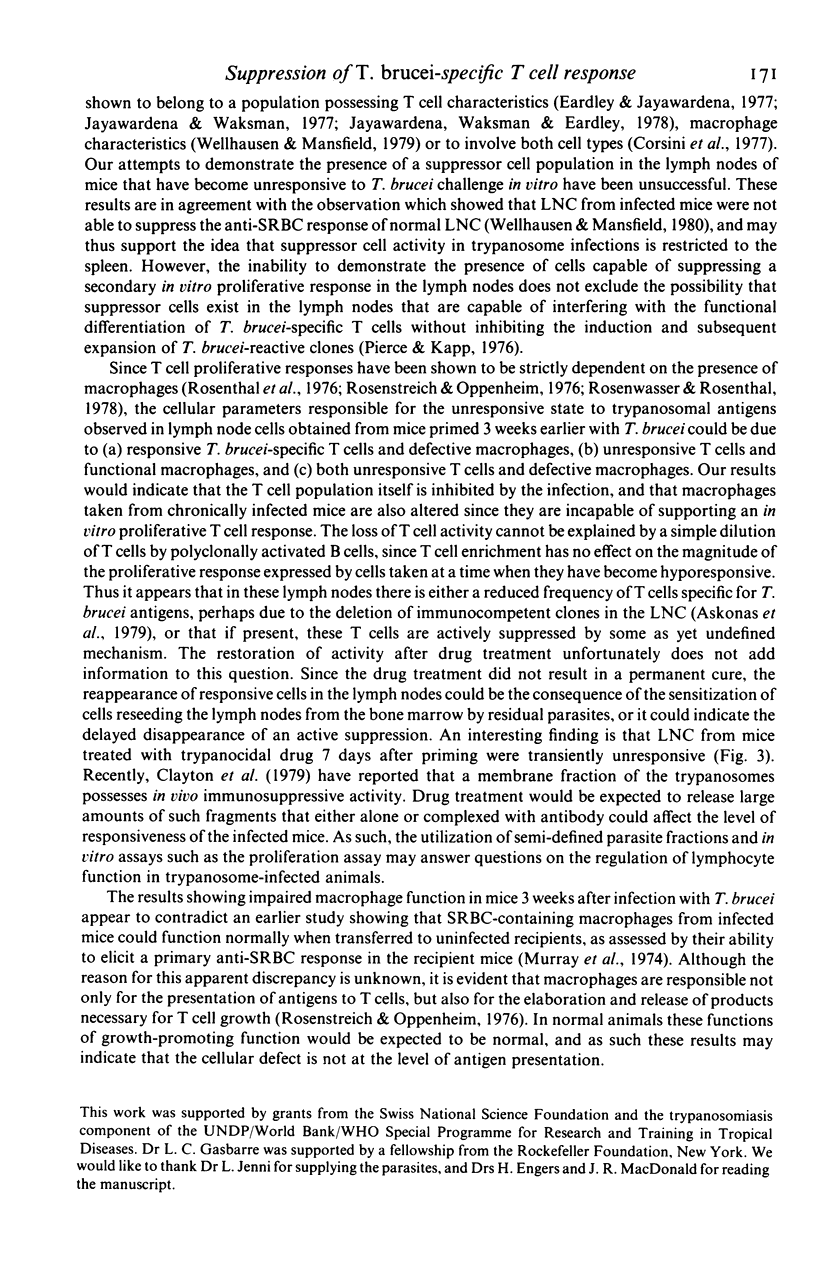
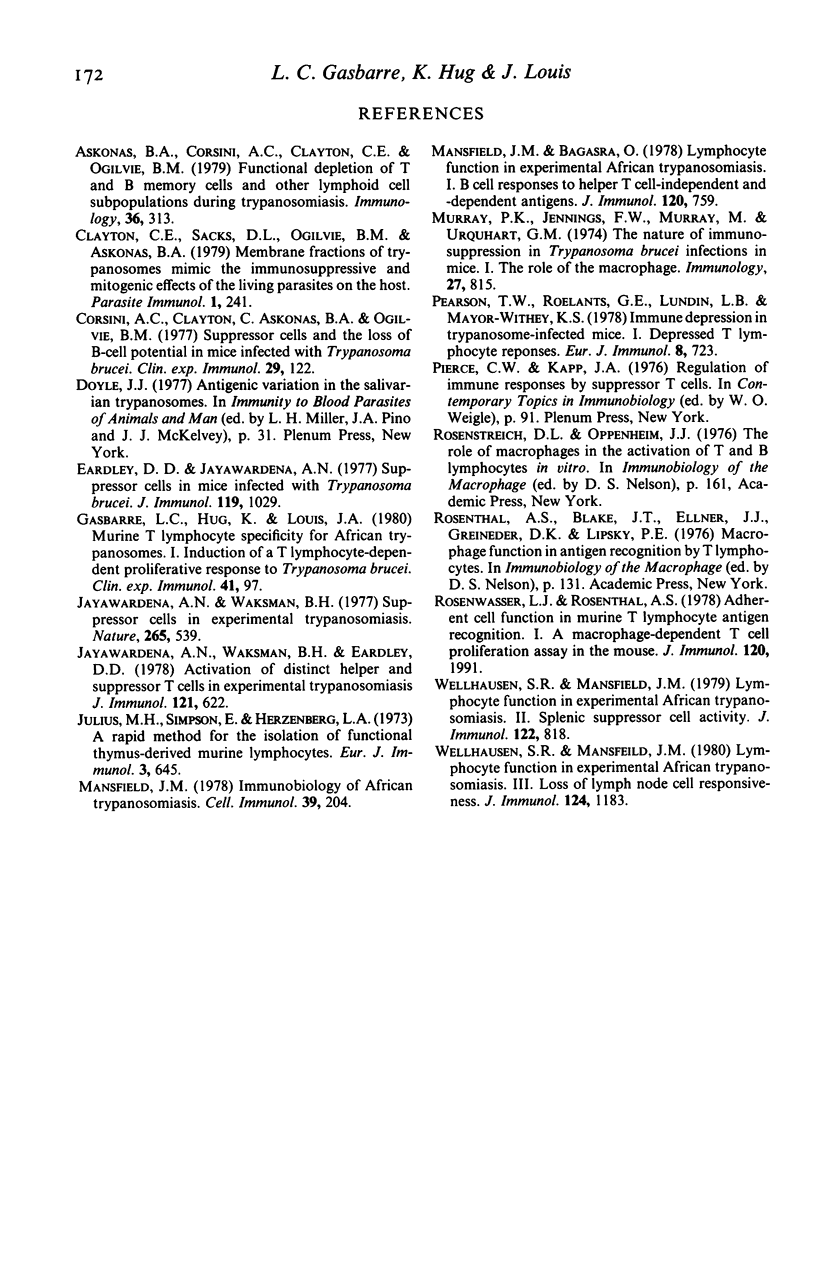
Selected References
These references are in PubMed. This may not be the complete list of references from this article.
- Askonas B. A., Corsini A. C., Clayton C. E., Ogilvie B. M. Functional depletion of T- and B-memory cells and other lymphoid cell subpopulations-during trypanosomiasis. Immunology. 1979 Feb;36(2):313–321. [PMC free article] [PubMed] [Google Scholar]
- Clayton C. E., Sacks D. L., Ogilvie B. M., Askonas B. A. Membrane fractions of trypanosomes mimic the immunosuppressive and mitogenic effects of living parasites on the host. Parasite Immunol. 1979 Autumn;1(3):241–249. doi: 10.1111/j.1365-3024.1979.tb00709.x. [DOI] [PubMed] [Google Scholar]
- Corsini A. C., Clayton C., Askonas B. A., Ogilvie B. M. Suppressor cells and loss of B-cell potential in mice infected with Trypanosoma brucei. Clin Exp Immunol. 1977 Jul;29(1):122–131. [PMC free article] [PubMed] [Google Scholar]
- Eardley D. D., Jayawardena A. N. Suppressor cells in mice infected with Trypanosoma brucei. J Immunol. 1977 Sep;119(3):1029–1033. [PubMed] [Google Scholar]
- Gasbarre L. C., Hug K., Louis J. A. Murine T lymphocyte specificity for African trypanosomes. I. Induction of a T lymphocyte-dependent proliferative response to Trypanosoma brucei. Clin Exp Immunol. 1980 Jul;41(1):97–106. [PMC free article] [PubMed] [Google Scholar]
- Jayawardena A. N., Waksman B. H., Eardley D. D. Activation of distinct helper and suppressor T cells in experimental trypanosomiasis. J Immunol. 1978 Aug;121(2):622–628. [PubMed] [Google Scholar]
- Jayawardena A. N., Waksman B. H. Suppressor cells in experimentally trypanosomiasis. Nature. 1977 Feb 10;265(5594):539–541. doi: 10.1038/265539a0. [DOI] [PubMed] [Google Scholar]
- Julius M. H., Simpson E., Herzenberg L. A. A rapid method for the isolation of functional thymus-derived murine lymphocytes. Eur J Immunol. 1973 Oct;3(10):645–649. doi: 10.1002/eji.1830031011. [DOI] [PubMed] [Google Scholar]
- Mansfield J. M., Bagasra O. Lymphocyte function in experimental African trypanosomiasis. I. B cell responses to helper T cell-independent and -dependent antigens. J Immunol. 1978 Mar;120(3):759–765. [PubMed] [Google Scholar]
- Mansfield J. M. Immunobiology of African trypanosomiasis. Cell Immunol. 1978 Aug;39(1):204–210. doi: 10.1016/0008-8749(78)90094-1. [DOI] [PubMed] [Google Scholar]
- Murray P. K., Jennings F. W., Murray M., Urquhart G. M. The nature of immunosuppression in Trypanosoma brucei infections in mice. I. The role of the macrophage. Immunology. 1974 Nov;27(5):815–824. [PMC free article] [PubMed] [Google Scholar]
- Pearson T. W., Roelants G. E., Lundin L. B., Mayor-Withey K. S. Immune depression in trypanosome-infected mice. I. Depressed T lymphocyte responses. Eur J Immunol. 1978 Oct;8(10):723–727. doi: 10.1002/eji.1830081010. [DOI] [PubMed] [Google Scholar]
- Rosenwasser L. J., Rosenthal A. S. Adherent cell function in murine T lymphocyte antigen recognition. I. A. macrophage-dependent T cell proliferation assay in the mouse. J Immunol. 1978 Jun;120(6):1991–1995. [PubMed] [Google Scholar]
- Wellhausen S. R., Mansfield J. M. Lymphocyte function in experimental African trypanosomiasis. II. Splenic suppressor cell activity. J Immunol. 1979 Mar;122(3):818–824. [PubMed] [Google Scholar]
- Wellhausen S. R., Mansfield J. M. Lymphocyte function in experimental African trypanosomiasis. III. Loss of lymph node cell responsiveness. J Immunol. 1980 Mar;124(3):1183–1186. [PubMed] [Google Scholar]


